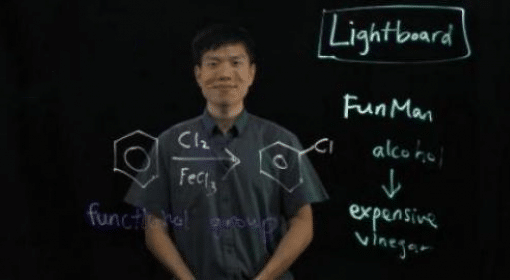Confs CAPSULE
⇓
Creating MOOC videos with lightboard
Présenté par Fung Fun Man, enseignant dans le département de Chimie, National University of Singapore

Currently there are two primary methods of recording flipped classroom videos: (1) using the white board and (2) screencasting a PowerPoint presentation. Both methods have several disadvantages. In the former, the presenter’s body obscures the content. Both methods lack an element of human interaction between the viewers and presenter and require lengthy editing. These reasons discourage educators from adopting the flipped classroom. In this article, we share our motivations and experience with the Lightboard, an interesting method of filming with a glass board that addresses the aforementioned problems. This novel format, first introduced and developed by Professor Michael Peshkin at Northwestern University, could help achieve our pedagogy goal of engaging chemistry learners better by providing greater visual connection with the lecturer.
- Fung Fun Man (2016). Exploring Technology-Enhanced Learning Using Google Glass To Offer Students a Unique Instructor’s Point of View Live Laboratory Demonstration. Journal of Chemical Education, 93(12), 2117–2122.
- Fung Fun Man (2016). Seeing through my lenses: A GoPro approach to teach a laboratory module. Asian Journal of the Scholarship of Teaching and Learning, 6(1), 99-115.
- Fung Fun Man (2015). Using first-person perspective filming techniques for a chemistry laboratory demonstration to facilitate a flipped pre-lab. Journal of Chemical Education, 92(9), 1518-1521.